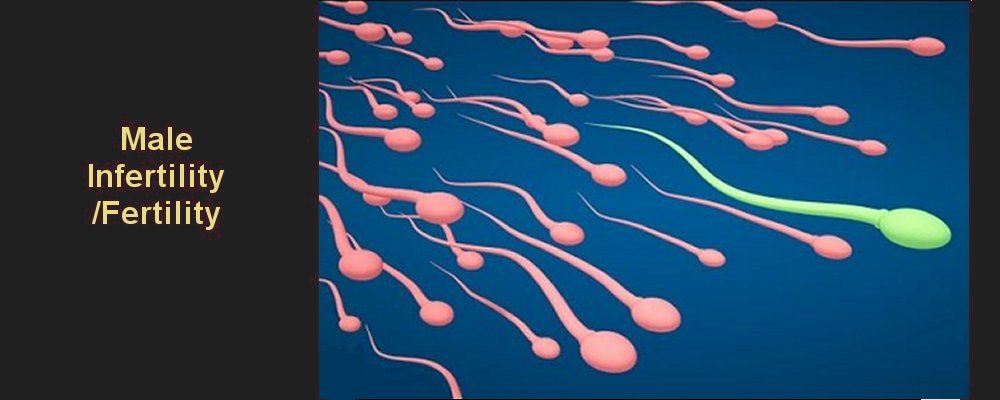
Male Infertility |
||
|
||

Infertility is defined as the failure to conceive after one year of unprotected sexual intercourse. Approximately 15% of couples attempting their first pregnancy meet with failure. In about 50% of couples seeking treatment, the infertility will be caused by a problem in the male. It is therefore important that both partners are seen and investigated together.There have been great technological advances in the development and success of assisted conception in the last two decades, such that many couples with infertility can now be offered treatment. There are a number of causes of male infertility including erectile dysfunction, hormonal problems, chemotherapy or radiotherapy, previous surgeries on the testis including undescended testis, drugs and medications. It is important to be aware that in some cases a cause may not be found. All male patients will undergo a thorough history and clinical examination, hormone profile, genetic studies and ultrasound scans depending upon their semen analysis and clinical findings. Causes of Male Infertility
Some specific causes are: • Hypothalamic disease can include deficiency in GnRH, LH or FSH Diagnosis of Male Infertility
The most useful tool in testing for male infertility is the semen analysis. The ‘normal’ values for different measurements of sperm quality have been worked out by testing large groups of healthy fertile volunteers. When a semen analysis is done, the results are compared with the normal range of values and any abnormalities will suggest a male problem. The tests carried out on a semen sample will look for abnormalities in sperm number (the sperm count), sperm movement and sperm shape. Blood tests to assess the levels of hormones relevant to sperm production are also used to exclude hormonal factors and/or abnormalities. Treatment of Male Infertility
The best form of treatment will be discussed during consultation with your specialist. Treatment options include drug therapy for the man, intrauterine insemination (IUI), in vitro fertilisation (IVF) with or without sperm microinjection into the egg (ICSI) or artificial insemination by donor (DI). Sperm retrieval
Sperm retrieval techniques commonly used are MESA (microepididymal sperm aspiration) or PESA (percutaneous epididymal sperm aspiration) which are both used for removing sperm from the epididymis and TESE (testicular sperm extraction), where sperm cells are extracted from a biopsy of testicular tissue. TESE is usually reserved for non-obstructive disorders.
Another technique is TESA (testicular sperm aspiration) which is used in men who have normal sperm production but suffer from a blockage. Sperm tubules from the testicle are aspirated with a needle although the quantity of sperm retrieved using this technique is inferior to that of TESE. Drug treatments Lifestyle changes
A diet high in antioxidants such as vitamin C and E has been proven to improve the quality of sperm by decreasing the number of free radicals that may cause membrane damage. The use of zinc, fish oil and selenium has also shown to be beneficial.
Artificial insemination (AI)
. Fertility drugs are used to induce the growth of more than one egg during a single menstrual cycle, therefore monitoring is important during superovulation to ensure the side-effects of treatment and the risk of multiple pregnancies is avoided. Monitoring is usually carried out by blood tests to measure hormone concentrations and by ultrasound to track the development of the follicles. The aim is to generate two to three follicles.
When they have reached their target size, a single injection of human chorionic gonadotrophin (hCG) is given to the woman. Ovulation will then occur about 36 hours later at which time the sample of semen is prepared and placed into the uterus of the woman through a fine catheter.
In vitro fertilisation (IVF)
This form of treatment was developed to treat couples whose principle cause of infertility is tubal damage in the female but can be useful in those whose problems are caused by low sperm count, motility or poor shape. The introduction of ICSI in the 1990s, however, means that IVF is less commonly used.
Intracytoplasmic sperm injection (ICSI)
The female partner must undergo procedures of ovarian stimulation and egg collection, while the male partner must produce a sperm sample by masturbation or PESA, MESA, TESA or microdissection TESE if appropriate.
The sperm are then prepared and a few viable cells are salvaged for use. Some groups of men need to be carefully screened prior to this form of treatment. Men with a low sperm count or who do not ejaculate sperm should be tested for chromosomal problems and cystic fibrosis genes. Children born after ICSI have been intensively studied to look for increased occurrences of abnormalities, although most studies have not shown significant risk of abnormalities compared to natural conception. There may, however, be a small risk of congenital abnormalities of the genitalia and of an imprinting disorder known as Beckwith-Widemann syndrome.
Your specialist will discuss these possible risks with you before treatment starts.
Donor sperm
Recent changes to the UK law have removed the anonymity for sperm donors and a child born after sperm donation can now apply to make contact with the donor when they reach the age of 18. This has made it more difficult to recruit suitable sperm donors and has increased the costs.
Counselling for Male Infertility
The passage through a cycle of treatment is not easy and, as the statistics show, success cannot be guaranteed. Even couples who achieve pregnancy may experience the severe disappointment of pregnancy loss. Some couples also find that the dilemmas raised by assisted conception are more easily resolved after discussion with a trained counsellor.
Success Rates for IVF and ICSI
The rate of pregnancy following IUI is about half of that for ISCI but it is a less stressful, complex and costly treatment and has a place in less severe male infertility.
DNA fragmentation and Sperm Aneuploidy
It has been shown that a raised DNA fragmentation of >30% may lead to recurrent failure in IVF treatments. There are a number of causes of raised DNA fragmentation including infections, varicoceles and dietry problems and should be excluded in men and their partners before or after failing IVF treatment.
Interestingly, there may also be an abnormal complement of chromosomes in the sperm which can also lead to failure of success of ART. This is called sperm aneuploidy.
Both of these tests are complex tests which are offered by our clinic.
| ||
|
|
Summary |
|
